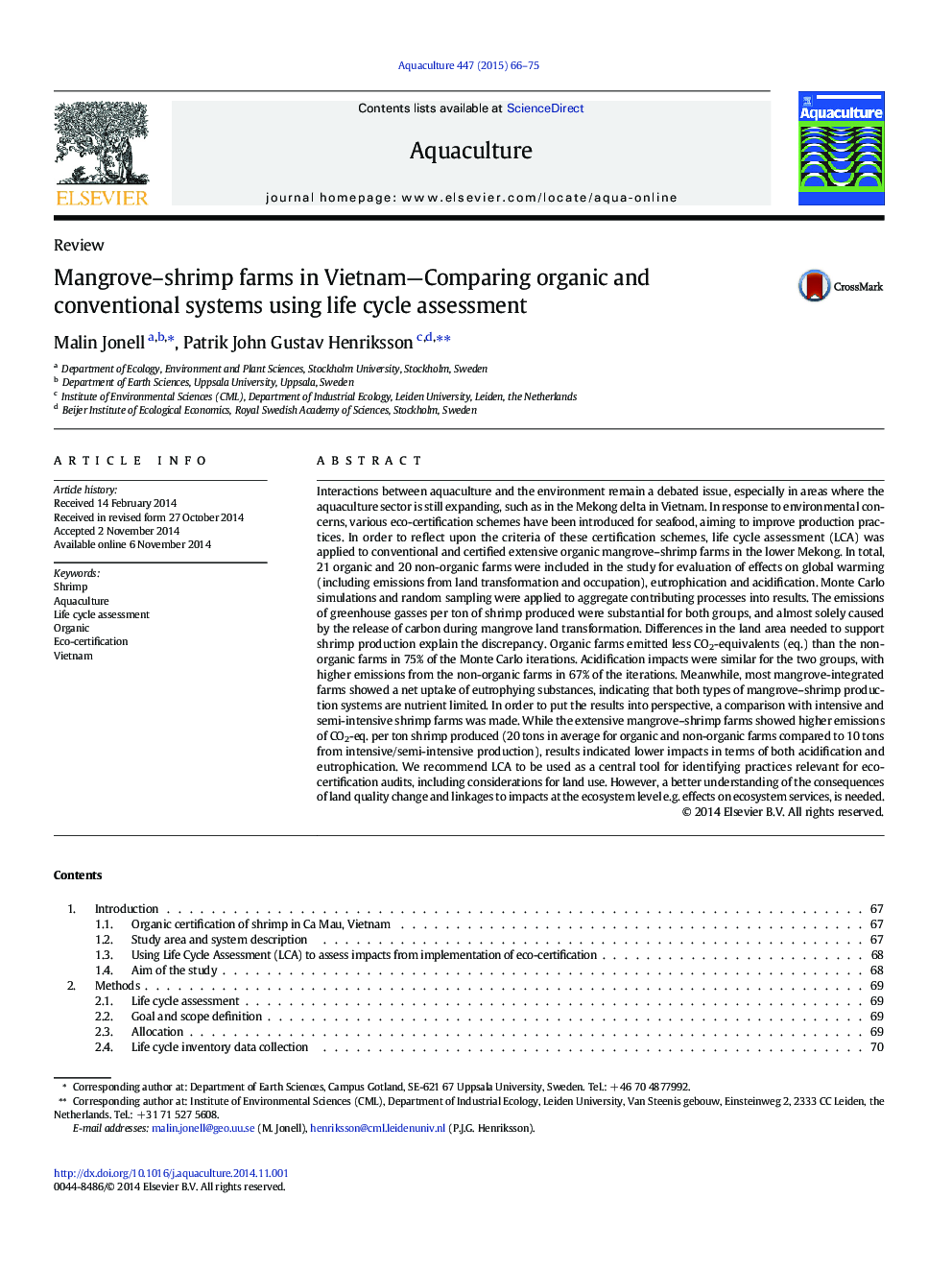| کد مقاله | کد نشریه | سال انتشار | مقاله انگلیسی | نسخه تمام متن |
|---|---|---|---|---|
| 2421592 | 1552840 | 2015 | 10 صفحه PDF | دانلود رایگان |
• Organic and non-organic mangrove–shrimp farms were investigated using LCA.
• There were no substantial differences between organic and non-organic farms.
• Mangrove–shrimp farms showed a net uptake of eutrophying substances.
• Mangrove–shrimp farming can cause substantial emissions of GHG from mangrove LULUC.
Interactions between aquaculture and the environment remain a debated issue, especially in areas where the aquaculture sector is still expanding, such as in the Mekong delta in Vietnam. In response to environmental concerns, various eco-certification schemes have been introduced for seafood, aiming to improve production practices. In order to reflect upon the criteria of these certification schemes, life cycle assessment (LCA) was applied to conventional and certified extensive organic mangrove–shrimp farms in the lower Mekong. In total, 21 organic and 20 non-organic farms were included in the study for evaluation of effects on global warming (including emissions from land transformation and occupation), eutrophication and acidification. Monte Carlo simulations and random sampling were applied to aggregate contributing processes into results. The emissions of greenhouse gasses per ton of shrimp produced were substantial for both groups, and almost solely caused by the release of carbon during mangrove land transformation. Differences in the land area needed to support shrimp production explain the discrepancy. Organic farms emitted less CO2-equivalents (eq.) than the non-organic farms in 75% of the Monte Carlo iterations. Acidification impacts were similar for the two groups, with higher emissions from the non-organic farms in 67% of the iterations. Meanwhile, most mangrove-integrated farms showed a net uptake of eutrophying substances, indicating that both types of mangrove–shrimp production systems are nutrient limited. In order to put the results into perspective, a comparison with intensive and semi-intensive shrimp farms was made. While the extensive mangrove–shrimp farms showed higher emissions of CO2-eq. per ton shrimp produced (20 tons in average for organic and non-organic farms compared to 10 tons from intensive/semi-intensive production), results indicated lower impacts in terms of both acidification and eutrophication. We recommend LCA to be used as a central tool for identifying practices relevant for eco-certification audits, including considerations for land use. However, a better understanding of the consequences of land quality change and linkages to impacts at the ecosystem level e.g. effects on ecosystem services, is needed.
Journal: Aquaculture - Volume 447, 1 October 2015, Pages 66–75
